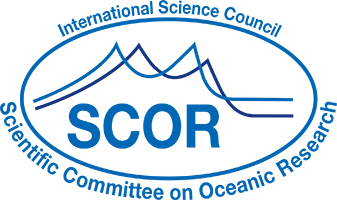We would like to let you know about two very interesting webinars coming up next week. The Global Ocean Observing System (GOOS) webinar on the Surface Ocean CO₂ Atlas (SOCAT) will be presented by Dorothee Bakker (University of East Anglia; UEA) and Kim Currie (National Institute of Water and Atmospheric Research; NIWA), and is scheduled for November 15, 18:00 GMT/UTC. The joint US CLIVAR and the US Ocean Carbon Biogeochemistry Program webinar on Ocean Carbon Hotspots, following up on a recent workshop on that topic, is scheduled for November 14, 18:00 GMT/UTC. It features Stu Bishop (North Carolina State University), Keith Rodgers (Princeton University), Alison Gray (University of Washington) and Dongxiao Zhang (NOAA PMEL).
GOOS webinar on Surface Ocean CO₂ Atlas (SOCAT)
Time: 15 November, 18:00 GMT/UTC
Presenting: Dr Dorothee Bakker, University of East Anglia (UEA) and Dr Kim Currie, National Institute of Water and Atmospheric Research (NIWA)
See what time that is for you »
Click this link to join the webinar to register for the webinar ahead of time.
[Please note GOOS is using a new platform for the webinar series and it is best to register online ahead of time in order to receive automatic reminders and enter seamlessly at the webinar start time.]
The Surface Ocean CO₂ Atlas (SOCAT) is a synthesis activity for quality-controlled, surface ocean fCO₂ (fugacity of carbon dioxide) observations by the international marine carbon research community (>100 contributors). SOCAT data is publicly available, discoverable and citable. SOCAT enables quantification of the ocean carbon sink and ocean acidification and evaluation of ocean biogeochemical models. SOCAT, which celebrates its 10th anniversary in 2017, represents a milestone in biogeochemical and climate research and in informing policy.
SOCAT data are released in versions. Each succeeding version contains new data sets as well as updates of older ones. The first version of SOCAT was released in 2011, the second and third version followed biennially. Automation allowed annual public releases since version 4. The latest SOCAT version (version 5) has 21.5 million observations from 1957 to 2017 for the global oceans and coastal seas. Calibrated sensor data are also available.
SOCAT version 6 will be released in summer 2018. Data submissions for this next SOCAT version are very welcome, and the submission deadline is on the 15th of January 2018.
More information on the GOOS webinar series »
US CLIVAR/OCB webinar on Ocean Carbon Hotspots
Time: 14 November, 18:00 GMT/UTC
Presenting: Stu Bishop (North Carolina State University), Keith Rodgers (Princeton University), Alison Gray (University of Washington) and Dongxiao Zhang (NOAA PMEL)
See this page https://usclivar.org/webinars for a link to access the webinar and to get more information on the webinar series.
Building on a recent workshop, the next edition of Variations webinar series, joint between US CLIVAR and the US Ocean Carbon Biogeochemistry Program, will examine western boundary current regions of the ocean, which have characteristics ideal for the study of biophysical interactions and carbon cycle processes. Join the authors as they present highlights from their articles and answer questions during this hour-long webinar.





 Please wait...
Please wait...